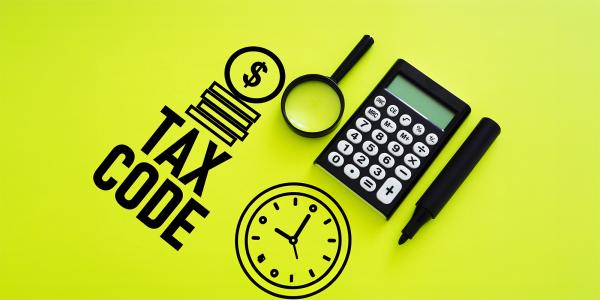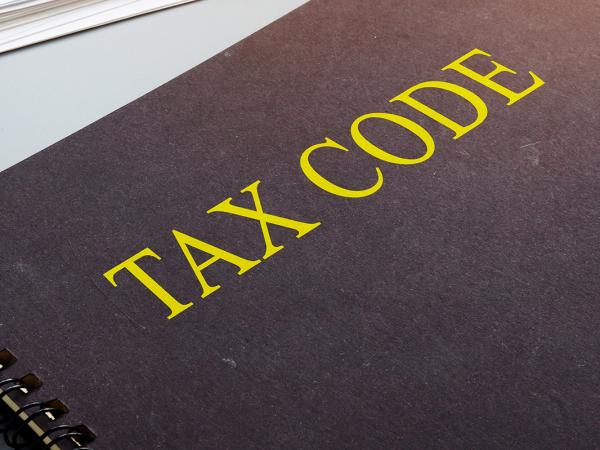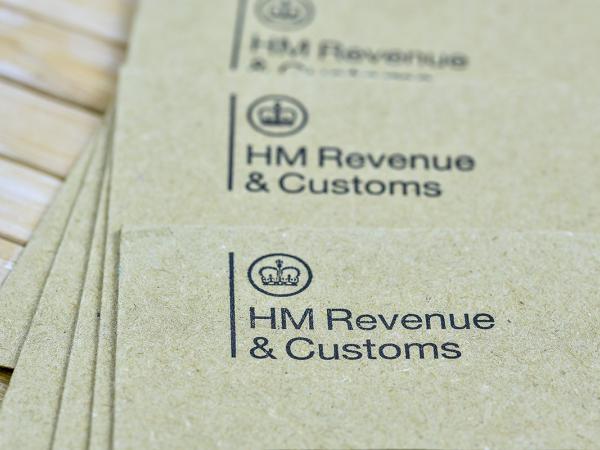Special PAYE codes
We set out the basics, including the common letters you will see in a tax code, on our page PAYE codes. Here, we explain more about special PAYE codes you may come across and what an emergency code is.

Content on this page:
Special tax codes
- K codes
-
Items that reduce your tax-free allowances can add up to more than those allowances, resulting in ‘minus allowances’. When this happens, HMRC treat these minus allowances as extra income on which tax is due, and they use a special code number beginning with the letter K.
If you drop the last digit of the minus allowance, then take off one, you will get the K tax code. For example, if you have minus allowances of £2,970, your tax code will be K296.
Although K codes are designed to collect extra tax, no tax code can take tax of more than half of that period’s pay or pension. For instance, if your pay or pension for the week or month is £300, a K code cannot result in your employer or pension provider deducting more than £150 tax from you in that week or month.
For an example of a K code, see theexample Jay: monthly paid wages – working out tax from K code on our page PAYE coding notices.
HMRC sometimes use K codes to collect tax return late filing penalty debts. K codes can severely affect your take-home pay. You can read more about this and what to do below.
- Code BR (CBR for Welsh taxpayers)
-
Code BR stands for basic rate – 20% in 2024/25. HMRC usually use this code for a second employment or pension where there is no tax-free amount available to reduce your tax deductions, because the tax-free allowance is allocated against your main employment or pension.
You can see how this works in the example below. Please note that for the sake of simplicity, the example ignores National Insurance contributions (NIC), which may also be payable.
Example: CBR code
Jake is a Welsh taxpayer and works for the local leisure centre in Wales. He starts to receive a second salary from a new job he takes on, working a few evenings in a cafe. Code CBR is to be operated on the new job.
Each monthly payment of £200 he receives at the cafe is taxed at the basic rate of 20%, so after tax of £40, Jake gets £160 in his hand.
However, if you have two or more jobs or pensions from which you receive a regular income (like occupational/works pensions or annuities from private pensions), neither of which pays enough to use up your personal allowance, you can contact HMRC and ask them to split your personal allowance between the jobs or pensions. This will mean that you do not pay too much tax during the year.
To see how this works, look at the example below. Please note that for the sake of simplicity, the example ignores National Insurance contributions (NIC), which may also be payable.
Example: more than one low-paid job
Janna, who is 20 and lives in England, works at a supermarket for eight hours a week over two evening shifts. She is paid £9.00 an hour and, over the course of the year, she estimates she will earn £3,600 in that job.
On 1 July, she gets a job at a local bar, working at weekends for 12 hours each week, at £9.50 an hour. She estimates that, by the end of the current tax year, she will have earned around £4,300 in that job.
Overall, she estimates her income in the tax year will be £7,900, which is below her 2024/25 personal allowance of £12,570.
She contacts HMRC asking them to split her allowances so that she should not have tax deducted by either employer.
Note that code BR is different from code 0T. With code BR, your employer or pension provider only deducts tax at basic rate for that job or pension, no matter how much you are paid. But where your employer or pension provider uses code 0T, they can deduct tax at the higher and additional rates once your income goes over a certain amount.
- Code D0 (CD0 for Welsh taxpayers)
-
Your employer or pension provider uses this code if HMRC expect all income from that employment or pension to be taxable at 40% – the higher rate. You may have a D0 code if you have two jobs or pensions), the main one of which fully uses your tax-free allowances and 20% tax rate band. HMRC will apply a D0 code against your second job or pension to make sure that you do not underpay tax.
You can see how this code works in the example below. Please note that for the sake of simplicity, the example ignores National Insurance contributions (NIC), which may also be payable.
Example: CD0 code
Meena lives in Wales and gets wages of £1,200 a month. Because her personal allowance and basic rate tax band are used against other income, she has a code CD0 in respect of the employment. Each monthly payment she receives is taxed at 40%, meaning tax of £480, so Meena receives the net amount of £720 in her hand.
- Code NT
-
This code means no tax will be deducted from your income. This may be because:
- you are not resident in the UK,
- you have arranged with HMRC to pay the tax on this income by another method, or
- you were declared bankrupt in the current tax year.
If your code was changed to NT because you were declared bankrupt in the current tax year, make sure it goes back to a ‘normal’ code from 6 April. If the NT code is used again in further tax years you are likely to build up a tax debt that you will have to pay.
- Code SBR
-
This code applies the Scottish basic rate to your income – 20% in 2024/25. It is used for Scottish taxpayers in a similar way to the BR code described above for taxpayers in the rest of the UK, but will only apply where income is projected to be lower than the Scottish intermediate rate threshold.
- Code SD0
-
This code applies the Scottish intermediate rate to your income – 21% in 2024/25. It is used for Scottish taxpayers in a similar way to the BR code described above for taxpayers in the rest of the UK.
You can see an example of this code in the example below. Please note that for the sake of simplicity, the example ignores National Insurance contributions (NIC), which may also be payable.
Example: SD0 code
Malcolm, who lives in Scotland earns £26,000 from his main job but has taken on a new job in a coffee bar one evening a week that pays him £50. This new job is allocated a code of SDO, meaning Scottish intermediate tax is deducted from these earnings before he gets them. Malcolm takes home £39.50 each week, after tax of £10.50 has been deducted (£50 x 21%).
- Code SD1
-
This code applies the Scottish higher rate to your income – 42% in 2024/25. It is used for Scottish taxpayers in a similar way to the D0 code described above.
- Code SD2
-
This code applies the Scottish top rate to your income – 48% in 2024/25. It is used for Scottish taxpayers in a similar way to the D0 code described above.
Changing to a K code
As explained above, a K code results in more tax being taken out of your pay or pension, because it treats you as having extra income. Sometimes HMRC might change your PAYE code to a K code to collect a tax debt, including debts that relate to penalties – for example, for filing your tax return late. This is likely to reduce your take-home pay or pension significantly, as they may be trying to collect the debt over a short period of time.
You should be able to tell if you have a K code by looking on your most recent payslip. Remember that the letter K will start your code if you have a K code, rather than ending it, for example K784 rather than the standard 1257L code.
The debt HMRC are trying to collect may be very old. You may not have received any recent correspondence about the debt, for example, offering you a chance to clarify or dispute the debt. For many different reasons, you may not have received the notification that HMRC should have sent about your PAYE code change – in fact, the first you may have heard about it was when your take home pay was less than you were expecting in a recent pay period.
It is possible that you might be able to challenge the debt or the penalties that HMRC are trying to collect, for example:
- where you registered to complete a tax return but did not actually meet the criteria for one (meaning HMRC can often withdraw it and remove any late filing penalties),
- where you have a reasonable excuse for not filing your tax return on time (meaning you can appeal the late filing penalties), or
- where HMRC issued a tax return to try and collect a PAYE underpayment that has gone unpaid, but the PAYE underpayment arose due to an employer error (meaning HMRC should have attempted to collect the underpayment from the employer in the first instance rather than issue a tax return to the employee).
If you are not sure why your tax code has changed, you should contact HMRC as soon as possible.
Hardship
If you agree the debt is due, but the fall in your income caused by the change to a K code causes you financial difficulties and you are struggling to meet your day-to-day expenses, you should contact HMRC and tell them that the inclusion of the debt in your tax code is causing you hardship.
If they agree, they may be able to organise another way for you to repay what you owe. They might remove the debt from your tax code and ask you to pay in instalments outside of the PAYE system. This would mean that you would have to pay interest on the debt, which is not the case in relation to debts that are in your PAYE code. Or they may be able to change your tax code so that it still collects the debt, but over a longer period.
K codes and means-tested benefits
If you have a K code to collect a tax debt and you are on a low income, this may affect your entitlement to means-tested benefits. Often, entitlement to means-tested benefits is calculated on your after-tax income. This means your means-tested benefit may increase because your after-tax income has fallen. You should contact JobCentre Plus, The Pension Service and/or your local authority to advise them of your reduced income due to the extra tax you are paying and ask how it affects your entitlement. Alternatively, you can seek a benefits review from a charity providing welfare rights advice or you could use one of the benefits calculators referred to on GOV.UK.
If you are in serious debt, please see the guidance on our page Tax payment problems and debt.
Emergency tax codes
If you are undergoing the new starter checklist procedure your employer will use an emergency tax code. These codes also commonly apply to pension income where you draw from your pension flexibly.
An emergency code assumes that you are only entitled to the basic personal allowance. It does not take into account any other allowances and reliefs you may be entitled to, such as blind person’s allowance. So the emergency tax code for 2024/25 is 1257L, which is actually the same as the normal code for the vast majority of people. Sometimes BR/0T codes or Week 1/Month 1 codes are also referred to as emergency tax codes.
Week 1/Month 1 codes
If your circumstances have recently changed, then you may find that your tax code ends in W1 or M1. This means you have a Week 1/Month 1 tax code.
For example, if you change jobs in the tax year, your new tax code for your new job might be 1257L M1. This means that your tax will be worked out on a non-cumulative basis while you have that tax code. So, your employer must work out your tax each month based only on your pay for that pay period. They are not able to take into account any personal allowance from earlier in the year that you have not used. They must take into account 1/12 of the allowance showing on your tax code; when applying the rates and bands of tax, they can only allow 1/12 of each band that your pay falls into.
This tax code should be temporary. Once your new employer has provided all the details from your P45 (from your previous employer) to HMRC, HMRC should update your code so that it takes into account your income and tax from earlier in the tax year.
Being taxed on such a code can sometime mean that you will overpay tax. See our guidance on how you can get this back.



